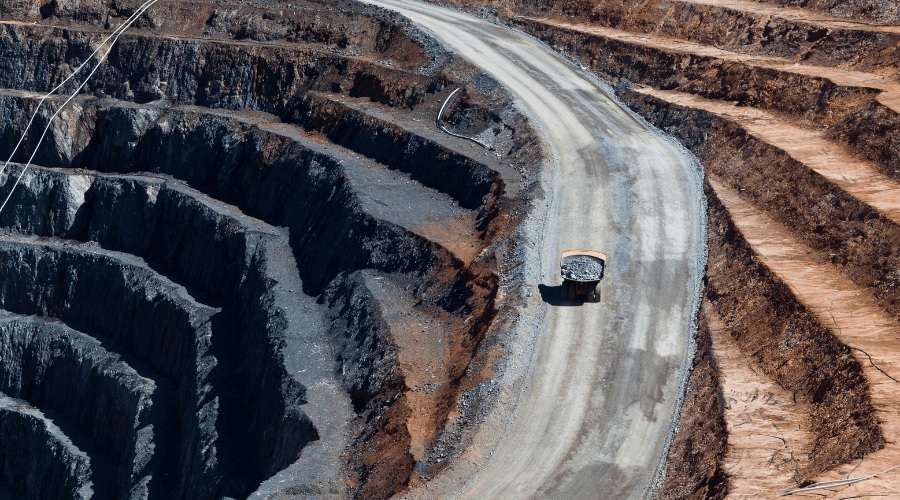Although Peru has a lot of mining potential, the perception of business people about the possibility of investing and developing mining projects in the country has deteriorated.
That is evidenced by the results of the latest Mining Competitiveness Index (ICM) 2022 prepared by the consulting firm Macroconsult and the Institute of Mining Engineers of Peru (IIMP), where the Andean country is at the bottom among six other countries with extractive operations.
Gonzalo Tamayo, a partner of Macroconsult and the IIMP, regretted that Peru is losing space “in the group of these countries of the Champions League” of extractive industries.

He indicated that, in general, Australia and Canada are ahead of countries in the region, such as Chile, Mexico, Colombia, and Peru.
But Peru ranks at the bottom of the list due to poorer performance in the social environment and cumbersome procedures required to move operations forward.
Colombia surpasses Peru in the Mining Competitiveness Index. Mexico, Chile, South Africa, Australia, and Canada lead the ranking.
“The main factors that pull Peru down are that the procedures for a mining project are complex and take more time and that the management of social conflicts has become even more complicated than it already was,” stated Tamayo after his presentation.
“In the short term, there is little room for improvement in the opinion that is going to be reflected because those responding to the surveys do not yet register positive signals,” he warned.
In fact, according to the study, 90% of those surveyed in the sector believe that the procedures for the approval of the necessary permits to develop mining activities are complicated or very complicated.
In addition, they expect them to get worse. Meanwhile, 67% believe that social conflicts surrounding mining are in a bad or very bad situation.
Among other indicators presented in the study, it stands out that investment in mining exploration migrates to countries with greater legal security than that perceived in Peru.
In fact, in this indicator of investment in exploration, the Andean country is in fifth place out of the seven countries analyzed, with 8% of the total resources allocated worldwide in 2021 to exploration (US$11.24 billion).
The lower perception of legal security is something that has worsened significantly between 2019 and 2022 in our country, according to data from the Fraser Institute.
While in 2019, 58% of respondents in the sector answered that legal security in Peru encouraged investment, in 2022, barely 12% affirmed it again.
“In legal security, we have had a strong delay,” Tamayo emphasized during his presentation.
He added that announcements generated greater insecurities for the private sector after the beginning of Pedro Castillo’s government, such as the one made by former Prime Minister Mirtha Vásquez regarding the closure of mines in the Ayacucho region.
Tamayo also pointed out that it is a problem that Peru’s geological potential has fallen in terms of perception because, in reality, the resources are present; and that Peru has not been able to replenish its mining reserves in recent years.
Among the positive factors in the index, it stands out that despite the inflationary environment, Peru has maintained its energy competitiveness compared to its peers, considering that the gas price for Peru’s industry has caps and is managed by contracts.
According to mining business people, legal certainty in Peru will plummet from 2019 to 2022.
SOCIAL CONFLICTS: A KEY FACTOR OF WEAKNESS
According to the ICM, poorly managed social conflicts in Peru have caused significant losses to the mining sector and the State, making this a key aspect in the deterioration of Peruvian mining competitiveness.
It is relevant to remember that in the last year, there were several blockades to mining operations in force, such as Antamina, Las Bambas, Cuajone, and Cajamarquilla, among others.
“In the State, the balance between the constitutional obligation to maintain free circulation and the balance of the right to protest has been left aside. Both are legitimate. But we have become accustomed to the fact that blocking races is something allowed when it is a crime,” Tamayo said.
According to ICM’s sentiment analysis, Tamayo highlighted that Peru had been the country with the most pessimistic coverage of mining issues until July 2022, mainly due to social conflict for the last four years.
On the other hand, Peru has also lost competitiveness in the tax area even though there have been no changes in the sector’s tax framework in the short term.
Tamayo explained that this movement might occur because other countries have improved their macro taxation and therefore are evaluated as better destinations for investment.
The tax framework in the region is less competitive compared to countries such as Australia and Canada. Peru is in fifth place out of seven countries.
“It is a relative position, some countries may have improved, and some may have worsened. Even if Peru does not move, whoever evaluates projects will see the ‘golden take’: how profitable the investment is,” he said.
With information from Bloomberg

